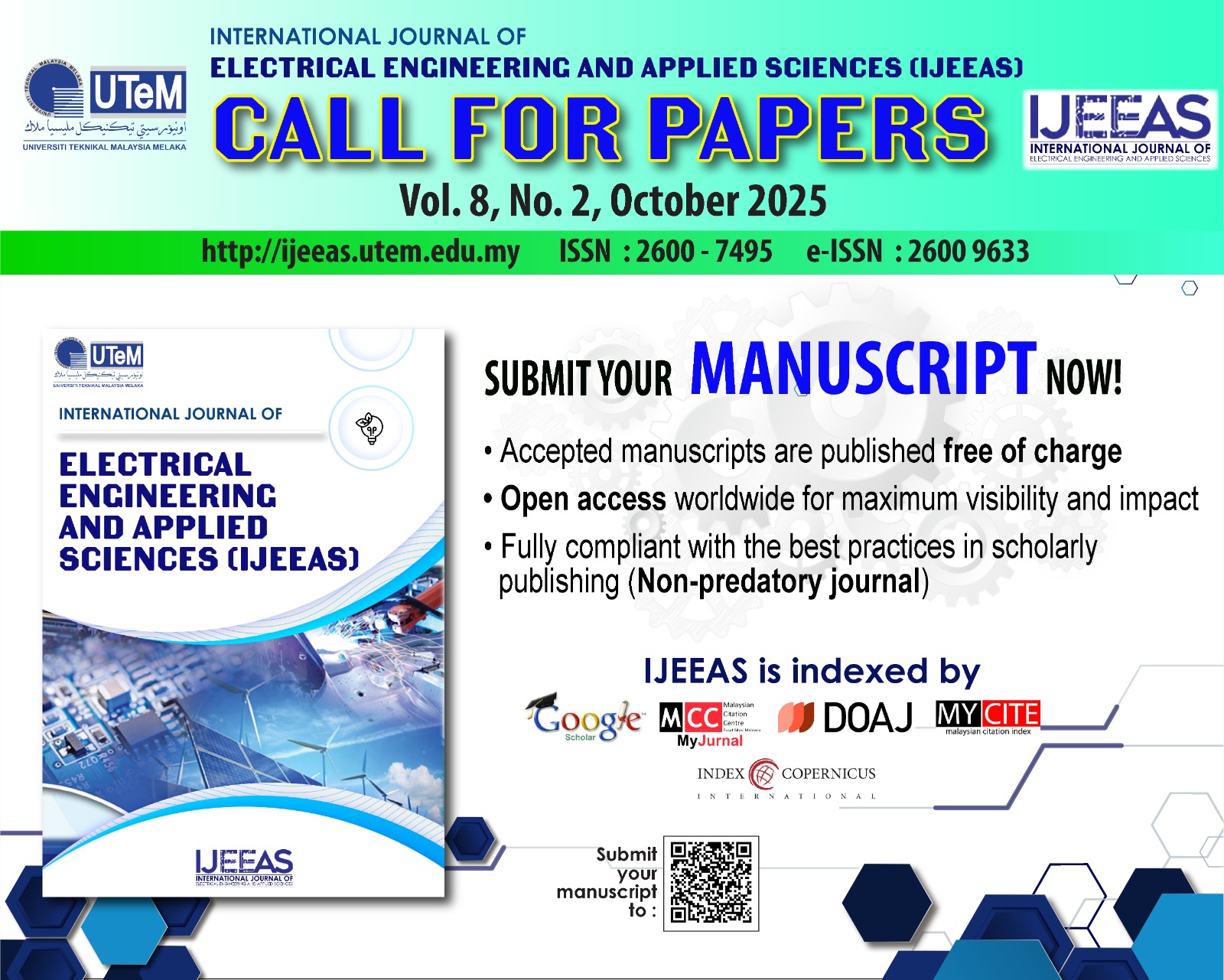Smart Indoor Parking System Based on Dijkstra’s Algorithm
Keywords:
Dijkstra’s algorithm, a smart parking system, Arduino, midsize class car, compact class carAbstract
Smart Indoor Parking System is a parking system that assigns the car to the nearest parking to the entrance by using Dijkstra’s Algorithm and assigns according to the size of the car. There are many types of parking system have been proposed such as smart parking system by using Wireless Sensor Network (WSN) but all these methods have their own advantage and limitation. Besides that, there are also several problems with the current parking system such as lack of parking management system efficiency. Therefore, this Smart Indoor Parking System is proposed to increase the efficiency of current parking management system. The aim of this Smart Indoor Parking System is to provide the customer with the nearest parking to the entrance. The parking is assigned according to the size of the car to utilize the parking space. Then, the parking place is displayed on the monitor besides the boom gate before allowing the driver to enter the parking lot. The parking number will help the driver to be able to find a parking lot in a short period of time without the need to search the parking by themselves. The priority is given to the driver who presses the button first. The input signal from the IR sensor located at the entrance and the parking lot is processing to assign the nearest parking lot based on Dijkstra’s Algorithm. In this project, the simulation is carried out by using Proteus. This simulation includes all the circuits for determining the direction of the nearest parking lot. Programming in the Arduino is implemented to calculate the nearest parking lot based on Dijkstra’s Algorithm. In conclusion, the Smart Indoor Parking System can be used in the real-time application.Downloads
References
R. Sehdehi, T. Henderson, M. Nadeem, A novel inductively powered intelligent parking solution, International Conference on Industrial Electronics for Sustainable Energy Systems (IESES), pp. 391-396, Waikato, New Zealand, 31 Jan-2 Feb 2018
A.R.A. Alkharabsheh, An intelligent cooperative multi-agentsbased parking system: design and implementation. Journal ofTheoretical & Applied Information Technology, Vol. 96(No.10): 2804-2815, May 2018.
S. Mendiratta, D. Dey, and D. R. Sona, Automatic car parking system with visual indicator along with IoT. 2017 International conference on Microelectronic Devices, Circuits, and Systems(ICMDCS), pp. 1-3, TamilNadu, India, August 2017.
C. Caballero-Gil, P. Caballero-Gil, and J. Molina-Gil, Cellular Automata-Based Application for Driver Assistance in Indoor Parking Areas. Sensors, Vol. 16(11), 1921: 1-17, November 2016.
L. Bo, P. Yijian, W. Hao and H. Dijiang, MADM-based smart parking guidance algorithm. PLoS ONE 12(12): 1-30,December 2017
R. John, and Ltd. Sons, Car Parking Bays, [Online].http://www.multi-storey-car parks.com/car_parking_bays.html[Accessed 23 Novermber 2016].
E. W. Dijkstra, A note on two problems in connexion with graphs. Numerische Mathematik, pp. 269-271, 1959.
K. Mehlhorn, and P. Sanders, Algorithms and Data Structures:The Basic Toolbox (Springer, 2008.)
G. Abishek, Path Finding: A or Dijkstra’s. International Journal of Management,IT and Engineering (IJMIE), Vol.4(No. 7), 2014.
J. Charika, and K. Jitendra, Processing delay consideration in dijkstra’s algorithm. International Journal of Advanced Research in Computer Science and Software Engineering, Vol.3(No. 8): 407-411, 2013.
Downloads
Published
How to Cite
Issue
Section
License
Authors who publish with this journal agree to the following terms:
- Authors retain copyright and grant the journal right of first publication with the work simultaneously licensed under a Creative Commons Attribution License that allows others to share the work with an acknowledgement of the work's authorship and initial publication in this journal.
- Authors are able to enter into separate, additional contractual arrangements for the non-exclusive distribution of the journal's published version of the work (e.g., post it to an institutional repository or publish it in a book), with an acknowledgement of its initial publication in this journal.
- Authors are permitted and encouraged to post their work online (e.g., in institutional repositories or on their website) prior to and during the submission process, as it can lead to productive exchanges, as well as earlier and greater citation of published work (See The Effect of Open Access).







